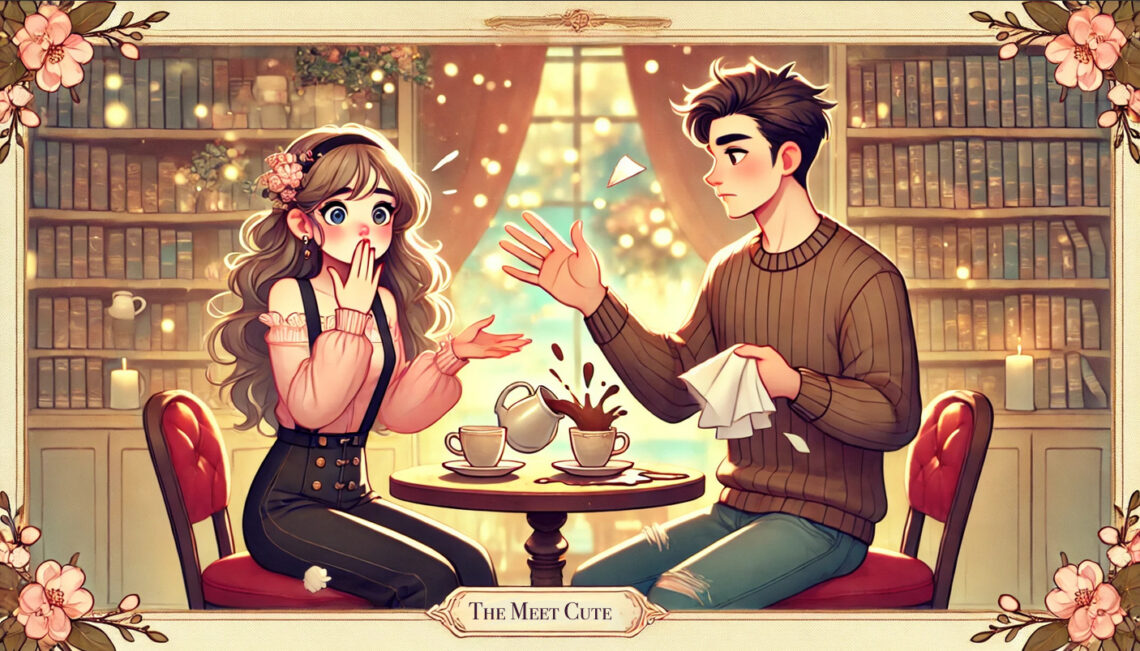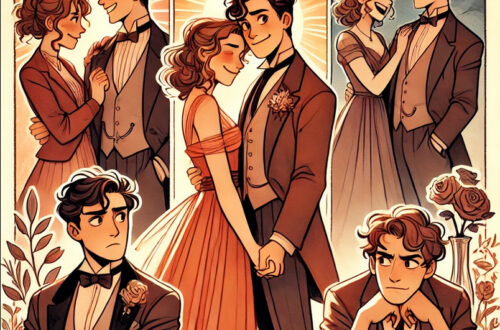
The Romance Meet Cute: Crafting Unforgettable First Encounters
In romance fiction, the meet cute is a pivotal moment. It’s the instant your protagonists’ paths cross, often setting the tone for their relationship and the story to come. A well-executed meet cute not only hooks readers but also lays the foundation for the chemistry, tension, and emotional depth that will unfold throughout the narrative.
This article delves into the essentials of the meet cute, offering tips, examples, and ways to ensure it resonates with your audience.
What is a Meet Cute?
The meet cute is the first significant interaction between your romantic leads. It’s where sparks fly, personalities clash, or curiosity blooms. Often memorable, humorous, awkward, or laden with tension, the meet cute establishes the dynamic that will define the romance.
While some meet cutes involve accidental, serendipitous encounters, others are deliberate and carefully orchestrated. Either way, they serve as the starting point for the emotional arc of your characters.
Why is the Meet Cute Important?
- Establishes Chemistry: The meet cute gives readers their first glimpse of the dynamic between your characters. Whether it’s playful banter or instant dislike, it sets the stage for the relationship.
- Introduces Conflict: Many meet cutes create an obstacle or misunderstanding that the characters will need to navigate.
- Engages the Reader: A unique and compelling meet cute hooks readers early, making them root for the couple.
- Reveals Character Traits: How your characters react to this initial encounter can provide insight into their personalities, fears, and desires.
Types of Meet Cutes
- The Accidental Collision:
- Example: Two characters literally bump into each other, spilling coffee or dropping books. Think of the classic scene in You’ve Got Mail when Kathleen and Joe unknowingly interact in real life while competing anonymously online.
- Tip: Play up the physicality and the awkwardness for humor or charm.
- Enemies at First Sight:
- Example: In Pride and Prejudice, Elizabeth Bennet meets Mr. Darcy at a ball, where his dismissive remarks immediately offend her. This sets up a dynamic of tension and eventual attraction.
- Tip: Highlight the conflict but plant subtle seeds of attraction to hint at future romance.
- The Mistaken Identity:
- Example: One character mistakes the other for someone else, leading to an awkward or comedic misunderstanding. In The Holiday, Amanda accidentally books a stay at Iris’s cottage, leading to a connection with Iris’s brother.
- Tip: Use the misunderstanding to reveal something deeper about the characters.
- Forced Proximity:
- Example: In The Hating Game by Sally Thorne, Lucy and Josh are forced to work in close quarters, leading to both frustration and attraction.
- Tip: Focus on the small, tension-filled moments that show their growing connection.
- Heroic Intervention:
- Example: One character rescues the other from an embarrassing or dangerous situation. In Outlander, Claire tends to Jamie’s injuries after he saves her.
- Tip: Use this as a way to demonstrate strengths, vulnerabilities, or both.
- The Shared Goal:
- Example: In 10 Things I Hate About You, Cameron meets Bianca while navigating the social hierarchies of their high school, leading to a shared plan.
- Tip: Introduce mutual stakes to force collaboration and interaction.
Tips for Crafting a Memorable Meet Cute
- Make it Relevant to the Plot: Ensure the meet cute ties into the story’s central conflict or theme. If your story revolves around a bakery, for instance, the meet cute could happen when one character forgets their wallet while buying a cake for a special occasion.
- Play with Contrast: Opposing personalities or goals can make the encounter more interesting. The tension between a neat freak and a free spirit, for instance, can create immediate sparks.
- Add Humor or Awkwardness: Readers love a touch of relatability. An embarrassing moment or clumsy accident can make characters feel more human and endearing.
- Focus on Authenticity: While larger-than-life meet cutes work in certain contexts, most readers connect better with encounters that feel organic. Ground the scene in emotions or situations that resonate.
- Use Dialogue to Shine: The meet cute is a prime opportunity to showcase your characters’ voices. Witty banter, sharp retorts, or heartfelt honesty can make the moment unforgettable.
- Foreshadow the Relationship Arc: Subtly hint at how the romance will unfold. If one character is uptight and the other is carefree, their initial clash can foreshadow the growth and compromise they’ll experience together.
- Highlight the Setting: The environment can add richness to the meet cute. Whether it’s a bustling café, a quiet bookstore, or a chaotic airport, use sensory details to enhance the mood.
Examples of Unique Meet Cutes
- Bookstore Banter: Two characters reach for the same rare book, leading to a humorous standoff about who deserves it more.
- Rainstorm Rescue: One character offers the other their umbrella during a sudden downpour, only to discover they’re heading to the same destination.
- Accidental Text: A misdialed number or accidental message sparks a conversation that leads to curiosity and eventual attraction.
- Pet Interference: A runaway dog or mischievous cat brings two strangers together in an otherwise mundane setting.
- Wedding Mix-Up: At a friend’s wedding, the protagonist is mistaken for a member of the other character’s party, creating awkward introductions and immediate chemistry.
Final Thoughts
The meet cute is the beating heart of a romance story’s opening. When done well, it captures the magic of first encounters while setting the stage for emotional investment. By blending humor, conflict, and genuine connection, you can create a meet cute that lingers in readers’ minds long after they close the book.
Whether it’s a mistaken identity, an accidental bump, or a shared moment of vulnerability, the key is to make it authentic and unforgettable. Your characters—and your readers—deserve nothing less.
Happy Writing,
Ann
Feel free to leave your thoughts or questions in the comments below.


